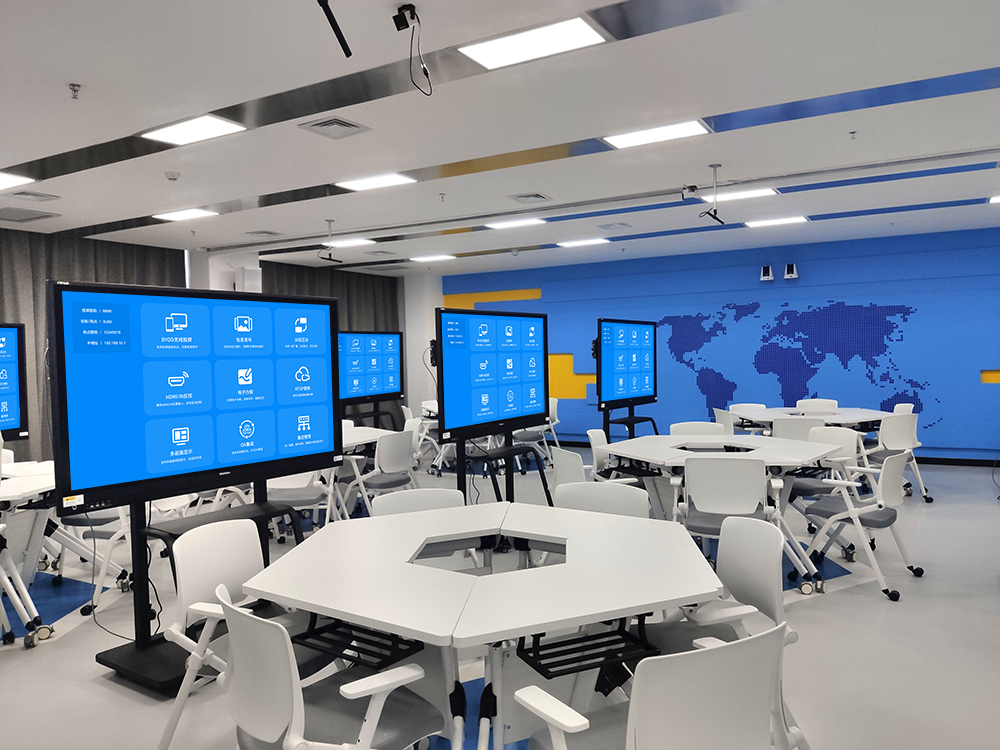Multi-Screen Interaction: A New Experience in Cross-Device Collaboration
The multi-screen interaction solution breaks down device barriers to enable seamless collaboration between phones, computers, tablets, and large displays. It’s simple to use and has powerful features, covering a variety of scenarios like office, education, and home. It makes information flow more efficiently.
Universal Device Compatibility, Easy to Get Started
It’s compatible with Android/iOS phones, Windows/macOS computers, and tablets, as well as smart TVs, meeting screens, and projectors. The compatibility rate for mainstream brands is over 95%. The connection methods are flexible and simple:
- Fast Wireless Connection: You can use a device’s native mirroring function or a QR code to connect in under 3 seconds, with no app installation required.
- Automatic Recognition: When a frequently used device is nearby, a pop-up will appear to remind you to connect, so you can mirror content with one tap.
- Wired Backup: It comes with HDMI and Type-C adapters, which can be used for situations where the wireless signal is weak to ensure a stable connection.
Diverse Interactive Functions, Igniting Collaboration
1. Synchronized Multi-Screen Display
It supports “one-to-multi,” “multi-to-one,” and “multi-to-multi.” In the office, multiple people can mirror proposals from their computers to a large display for a side-by-side comparison. In the classroom, a group can mirror its work from tablets and phones to a small screen for discussion and then mirror it to the main screen for the whole class to see. At a family gathering, friends and family can mirror photos and videos from their phones to the TV at the same time for everyone to enjoy.
2. Cross-Screen Interaction
- Reverse Control: The large display can be used to control the mirrored phone or computer. The presenter can play a video, flip through a presentation, or switch a document page without having to go back to their device.
- Extended Screen: A tablet can be used as a “second screen” for a computer, so you can edit a document on one screen while looking up information on the other. A phone can also be used as a “remote control” for the large display, allowing you to control playback from a distance.
3. Real-Time Annotation and Collaboration
In meetings and classes, multiple people can use different devices to highlight, annotate, and add text to the mirrored content. The annotations are synchronized to all screens in real time, so feedback is compiled instantly, and the results can be saved and shared with one click, which makes discussions more efficient.
Versatile for Real-Life Scenarios
- Office Scenarios: Efficient Collaboration
- When a team is working on a project, members can use their computers for a proposal, their phones for material, and their tablets for a design. All content is compiled on the large display in real time. In a remote meeting, a phone can mirror the on-site view and a computer can mirror the proposal details. A remote colleague can use a tablet to give feedback, boosting decision-making efficiency by 40% and shortening meetings by an average of 30 minutes.
- Classroom Scenarios: Engaging Classrooms
- A teacher can use a computer to explain a concept and a tablet to show a lab video, with both contents on the large display at the same time. A group’s work can be mirrored to the large display for critique. A student can take a photo of a question with a phone, and the teacher can explain it on the spot. This boosts classroom interaction by 50% and significantly improves knowledge absorption.
- Home Scenarios: More Fun and Entertainment
- You can mirror a movie or a show from your phone to the TV for an immersive viewing experience, and you can also use a tablet at the same time to see comments. When helping a child study, you can mirror an animation to the TV and use your phone to remotely control playback and pause for explanations. At a family gathering, you can take turns mirroring games and videos, which makes sharing happy moments on a large screen more enjoyable.
Smart Management, Secure and Convenient
- Access Control: You can set a device whitelist and a mirroring password. Only authorized devices can connect, which protects content privacy and prevents unwanted mirroring.
- Remote Maintenance: An administrator can monitor a device’s status in real time and perform remote on/off and firmware upgrades, which reduces maintenance costs and ensures stable operation.
- Scenario Presets: You can switch between “meeting,” “teaching,” and “entertainment” modes with one click, and the device parameters will automatically adjust for a more convenient experience.
There’s no complex wiring needed. A device can be used just by being powered on and connected to the network. The multi-screen interaction solution makes the most of each device’s advantages, achieving a collaborative value of “1 + 1 > 2,” and it easily adapts to a variety of scenarios.